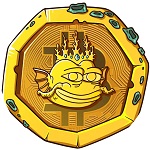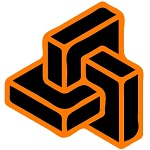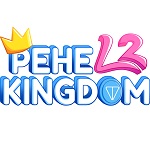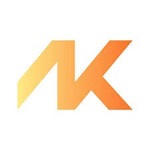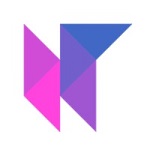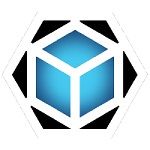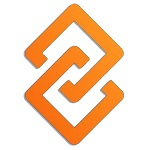Layer-2
| Projects | Status | Date start | Raised | Launchpad | Ecosystem | X score | Interest lvl | Industry | ||
|---|---|---|---|---|---|---|---|---|---|---|
IDO Upcoming IDO | Jul 11, 2025 | Exchanges & Wallets +4 | ||||||||
ICO Ongoing | Jul 11, 2025 | Meme +2 | ||||||||
ICO Pre-Sale | Jul 11, 2025 | AI +4 | ||||||||
ICO Pre-Sale | Jul 11, 2025 | Meme +1 | ||||||||
IDO Ongoing IDO | May 12, 2025 | AI +2 | ||||||||
ICO Ongoing | May 12, 2025 | Meme +1 | ||||||||
ICO Ongoing | May 12, 2025 | Gaming +4 | ||||||||
ICO Ongoing | May 12, 2025 | NFT +2 | ||||||||
ICO Pre-Sale | May 12, 2025 | Finance +2 | ||||||||
ICO Pre-Sale | May 12, 2025 | Meme +2 | ||||||||
| May 12, 2025 | $10,8M | Internet & Telecommunications +6 | ||||||||
| May 12, 2025 | Privacy & Security +6 | |||||||||
| May 12, 2025 | AI +2 | |||||||||
| May 12, 2025 | Trading & Investing +3 | |||||||||
| May 12, 2025 | $3M | Blockchain +3 | ||||||||
| May 12, 2025 | $33M | Software +5 | ||||||||
ICO Past | May 12, 2025 | Exchanges & Wallets +1 | ||||||||
| May 12, 2025 | $8,7M | Blockchain +1 | ||||||||
| May 12, 2025 | Finance +9 | |||||||||
| May 12, 2025 | Blockchain +4 | |||||||||
| May 12, 2025 | Finance +6 | |||||||||
| May 12, 2025 | $10,5M | Blockchain +7 | ||||||||
IEO Past | Apr 24, 2025 | $6M | Blockchain +7 | |||||||
| Apr 24, 2025 | Blockchain +9 | |||||||||
| Apr 24, 2025 | $3,14M | Blockchain +6 | ||||||||
| Apr 24, 2025 | Blockchain +4 | |||||||||
IEO Past | Mar 25, 2025 | $3M | Gaming +3 | |||||||
IDO Past | Apr 17, 2025 | Software +4 | ||||||||
ICO | Apr 17, 2025 | Blockchain +3 | ||||||||
ICO | Apr 17, 2025 | DeFi +1 | ||||||||
| Apr 17, 2025 | $12M | Science & Research +6 | ||||||||
| Apr 17, 2025 | $5M | Blockchain +3 | ||||||||
IDO Past | Mar 13, 2025 | AI +4 | ||||||||
| Mar 13, 2025 | Trading & Investing +3 | |||||||||
IDO | Feb 07, 2025 | Crowdfunding & Lending +5 | ||||||||
ICO Past | Feb 07, 2025 | Meme +1 | ||||||||
ICO IEO Past | Mar 30, 2025 | $5M | Layer-2 +2 | |||||||
IDO Past | Mar 21, 2025 | AI +5 | ||||||||
| Mar 21, 2025 | Blockchain +4 | |||||||||
| Mar 21, 2025 | Blockchain +4 | |||||||||
ICO | Mar 21, 2025 | Meme +2 | ||||||||
IDO Past | Feb 11, 2025 | NFT +3 | ||||||||
IDO Past | Feb 17, 2025 | Gaming +6 | ||||||||
| Feb 17, 2025 | $7M | DeFi +1 | ||||||||
IDO Past | Feb 06, 2025 | Trading & Investing +5 | ||||||||
IEO Past | Nov 25, 2024 | Blockchain +3 | ||||||||
| Nov 25, 2024 | $55M | Blockchain +3 | ||||||||
| Nov 25, 2024 | Blockchain +1 | |||||||||
| Nov 25, 2024 | Crowdfunding & Lending +4 | |||||||||
| Nov 25, 2024 | Identity & Reputation +6 | |||||||||
What is Layer 2 Blockchains
Layer 2 Solutions or L2 blockchains – these are infrastructure solutions in the form of applications and various software built on top of basic blockchains. They can process large volumes of transactions and reduce the load on the main network…
Most of the leading DeFi or NFT protocols in the ecosystem support Layer 2 solutions, and project developers are working on integrating them. Some new services are already using Layer 2 solutions at launch, skipping the development phase on the Ethereum base network.
The reason for the popularity Layer 2 solutions is simple: everything that users can do on Ethereum can be done with L2 solutions, spending hundreds of times less on network commissions. At the same time, the reason for the increased confidence in the technology lies in the unconditional support and advertising by the Ethereum Foundation and Vitalik Buterin personally. Vitalik quite often writes about the development of L2 solutions, which makes additional advertising for the projects. For example, he most often speaks positively about one particular project – Polygon.
How it works
Layer 2 blockchains are an important complement to the underlying L1 blockchain, providing increased scalability and performance. They utilize a variety of technologies and methods to achieve these goals and provide a wide range of options for developers and users.
The fact is that the above challenges are key needs of basic Layer 1 blockchain systems. Also, this problem is summarized in the term “Blockchain Scalability Trilemma”. It consists of the difficulty of creating a network that is simultaneously fast, decentralized and secure. Therefore, developers often have to select and optimize a maximum of two components out of three.
The architecture of the first blockchains, such as Bitcoin or Ethereum, is not designed from the outset to handle huge flows of users and transactions. Therefore, these ecosystems have the problem of low throughput. For example, BTC has 5-7 transactions per second (TPS), while ETH has an average of 15 TPS.
Example L2 blockchain solutions
- Lightning Network: Is a Bitcoin scaling system that is one of the solutions to the problem of its limited throughput. It allows for almost instant transfers of coins with minimal fees.
- Optimistic Rollups: To group multiple transactions together, then process and verify them on the core blockchain.
- Plasma: Framework for creating nested blockchains that are children of the main Ethereum blockchain. It processes transactions on child chains, with the results periodically committed to the main chain.
- zkSync: Enables the Zero-Knowledge Rollup mechanics. This solution allows the Ethereum network to be highly scalable while maintaining its security.
Ultimately, L2 solutions can provide a partial but significant solve to the problems of low bandwidth and high fund transfer fees without breaking the underlying blockchain code. And a key benefit of Layers 2 is the ability to transfer digital assets between L1 blockchain participants and L2 participants, which can be in the form of a separate protocol or blockchain.
Let’s consider several Layer 2 solutions for the Ethereum system.
Despite its low speed, ETH is the most heavily loaded resource for decentralized applications. Its ecosystem hosts the lion’s share of projects in the areas of DeFi NFTs and many others. Therefore, the problem of scalability is especially acute for Ethereum.
From a technical point of view, the classification of L2 solutions is complex and multifaceted. For a basic understanding, we can distinguish three groups:
- Optimisitc Rollups, among the most recognizable protocols of which are Polygon, Optimism and Arbitrum.
- The second group includes zkRollups with Zero knowledge (ZK) technology. The most popular projects are Loopring (LRC), zkSync and the Aztec anonymous transaction network.
- The third category includes those projects that use network sidechains and various combinations of several technologies and networks. For example, the Parastate protocol works by communicating with the Polkadot blockchain and allows the use of the popular languages Rust, Golang and C++ for application development.
Another way to increase the throughput of a blockchain is horizontal data partitioning or sharding. This is the division of a data set into multiple databases. Blockchain sharding is the division of a single chain into individual independent segments called shards. Each shard contains a unique set of smart contracts and account balances. Each shard is assigned a node for validation, thus distributing the load across several validators.
The main feature of sharding is the transition from a system where a node calculates every operation to a model where it only performs some calculations. This allows for parallel processing of different tasks. This division of the blockchain into more manageable segments increases throughput. As a result, sharding helps to avoid network congestion and reduce transaction fees.
It is worth noting that sidechains may not always be a direct L2 solution. For example, in Cosmos or Polkadot. In these cases, while Cosmos uses its own security system, Polkadot relies on the “parent” blockchain for security.
Advantages of Layer 2
Key Features of Layer 2 Blockchains:
- Scalability: One of the main aspects of Layer 2 blockchains is the ability to increase the number of transactions processed without having to change the underlying L1 blockchain protocol. This is achieved by moving some of the transactions to Layer 2.
- Performance: Layer 2 blockchains offer faster transaction processing speeds and lower transaction fees. This makes them more efficient for microtransactions and other performance-intensive operations.
- Technology diversity: There are several different technologies and methods that can be used in Layer 2 blockchains, including sidechains, state channels, plasma or rollups. Each of these technologies has different characteristics and applications in different scenarios.
Conclusion
Layer 2 solutions play an important role in the development of the blockchain industry, providing the necessary scalability and performance to support more users and complex applications. As these technologies mature, we can expect further improvements in efficiency and cost reductions not only for Ethereum, but for most other blockchain platforms as well.




